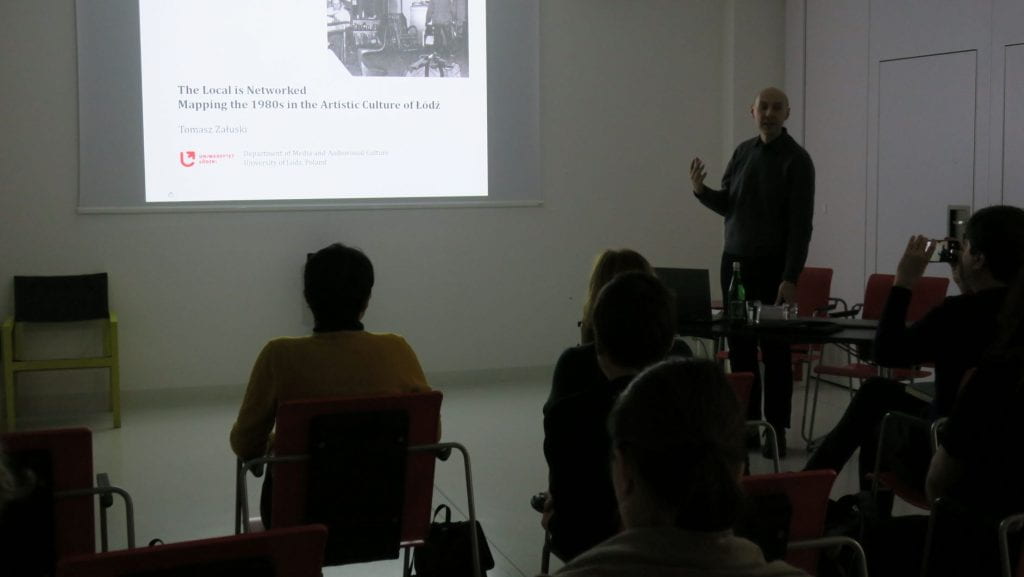PRL – GDR
By editorial, on 3 March 2020
Constanze Fritzsch
A local art history and mapping of the art scene of a single city can be very problematic because of flattened art history that proposes only a very narrow narration. Nevertheless, as in translocal, comparative art history the scale plays an important role, the art history of a region or a city may permit a comparison that otherwise would not be possible as in the case of Poland and GDR. A Polish, East-German comparison is especially challenging because of the lack of significant translocal exchanges or networks as well as different chronologies due to different socio-political settings. The presentation of the Łodź art scene of the 1980s by Tomasz Zaluski provided a common ground for parallels of the art scenes of Łodź, Leipzig and Dresden beyond a strict chronology and without neglecting the very specific context. Parallels can be drawn and studied between the necessary irony and sarcasm to deal and face an over-ideologized everyday life and a disastrous economic situation in the exhibitions of the Eigen + Art Gallery or the performances of the Auto-Perforations-Artisten. As a result, in parts of all three art scenes the art practices are characterized by a disillusionment with the socialist project and a network of private initiatives, as the production of Super film in Dresden or the different groups around A.R. Penck shows. Moreover, the church serves not only as a host for art events, but also as a spiritual resource and biographical background for artists like f. e. Else Gabriel (member of the Auto-Perforations-Artisten) as well as a platform which would allow a forum to debate and communicate. This analyze of similarities can be embedded in a Europe-wide art history of tendencies, characteristics and issues of the art of the 1980s.
 Close
Close


